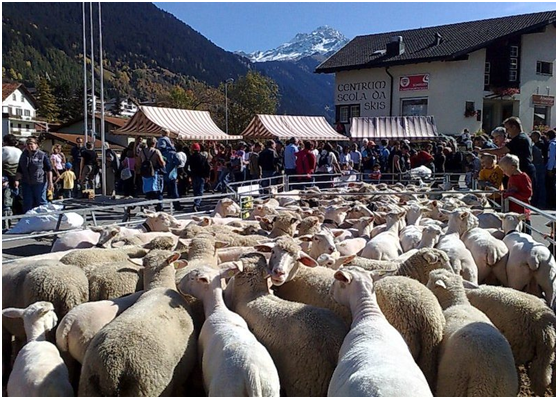
Exhibition time: 17-19 March, 2025 Shanghai, China
 中文
中文

Exhibition time: 17-19 March, 2025 Shanghai, China
 中文
中文

As Canadian sheep farmers look beyond the spinning wheel for a wool market, studies show that nitrogen-rich wool pellets could replace climate-busting synthetic fertilizers in food production, creating a circular economy that helps mitigate the heavy carbon footprint of wool itself.
The research bodes well for the copious amounts of waste fleece that has burdened sheep farmers for decades. Too dirty to be sold without heavy-duty chemical processing, the fleece piles up, as health protocols (and basic practicality) require sheep to be shorn regularly. Farmers are typically forced to bury or burn the material. But now design students in British Columbia are imagining new ways for the wool to be used, writes the Western Producer.
Alberta sheep farmer Tara Klager approached the Vancouver-based Emily Carr University of Art and Design with her wool waste problem, hoping industrial design students could “build something uniquely Canadian” while giving the raw material a new life. Their collaboration aims to bring together “everyone from producers, processors, designers, and engineers to creative thinkers, problem solvers, innovators, and fine artists,” writes Western Producer. Emily Carr’s urban-based professionals will get to learn the on-the-ground material realities of sheep farming, while the farmers will gain perspective from those who make a living in labs and design studios.
“Are there ways that we can, for instance, feed our sheep so that the fleeces don’t get as dirty, so they don’t need to have as much washing done, and they’re more readily available to be used without the same level of processing, which, of course, would make it more accessible and have a lower price point?” Klager pondered, reflecting on some of the insights farmers could stand to gain.
Another possibility, she said, would be to minimally process the wool into small pellets—as has been done before, turning it into a powerful organic fertilizer and soil amendment for food producers. Wool pellets have been “successfully substituted” for synthetic fertilizers in the production of iceberg lettuce and tomatoes, according to a German study from 11 years ago.
And in 2022, University of Vermont researchers concurred that the pellets “performed very similarly to commercial organic fertilizer” for spinach and tomato crops. They concluded that wool pellets “could be a promising alternative that may open up opportunities for greater integration of plant and animal systems on diversified farms.”
Extremely high in nitrogen, thanks to the animal dung and urine the wool-to-yarn process removes, the wool pellets have the upper hand on commercial fertilizers because they release their nitrogen slowly. This is a key factor in limiting the climate harms of nitrous oxide, produced when microbes break down the nitrogen in soil. The alternative—quick-release synthetic nitrogen fertilizer—is a major climate super-pollutant, about 285% more potent than carbon dioxide. It accounts for 2.4% of global climate emissions, and 21.5% of annual direct emissions from agriculture when the full supply chain is accounted for, writes CivilEats, citing a 2021 report from Greenpeace International, GRAIN, and the Institute for Agriculture and Trade Policy.
And the pellets have climate and ecosystem benefits beyond being a slow-release source of nitrogen: they are also powerfully absorbent. Small Farm Canada noted in 2017 that wool pellets can hold up to 20 times their weight in water. They also act to aerate soil, while offering protection against pests like slugs. (Ever wear a scratchy sweater? To your average slug, a field sown with wool pellets might well resemble a terrain bristling with barbed wire.)
And then there is the emissions-saving potential in having wool pellets form a link in a new circular economy, which reconceives wool as a form of “farm-grown fertility that could replace synthetic or imported organic fertilizers to meet nitrogen needs,” as the Vermont team put it.
It will not be easy to make a dent in the considerable emissions of traditional wool production—a single wool sweater generates nearly 14 kilograms of carbon dioxide-equivalent sheep-to-shop, with much of that generated by the ruminants themselves, says 8BillionTrees. But such “farm-grown fertility” would help reduce emissions that accrue from the production and transport of off-farm fertilizers, while giving farmers some relief from an expensive synthetic input.
Sourcing from https://www.theenergymix.com/